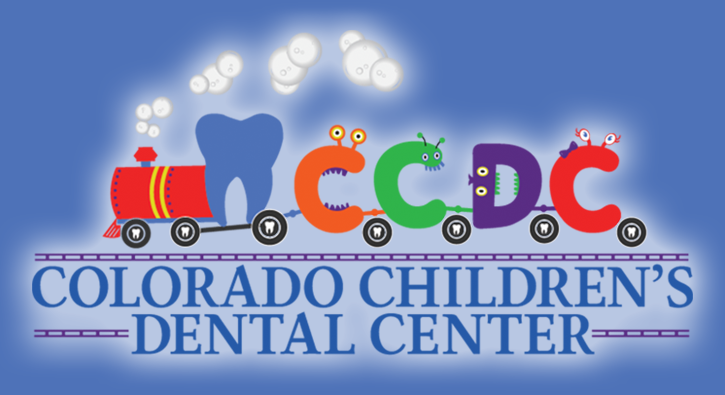The CCDC Blog
Thumb Sucking Habits
When To Stop!
By Brianne Jones, RDH
Thumb Habits
Sucking on a thumb or finger is normal for infants and young children and most children stop on their own. However, if a child doesn't stop on their own, we do advise parents to discourage the habit ideally after age 3. Prolonged thumb sucking can lead to crooked teeth and bite problems affecting both baby teeth and permanent teeth that are developing, causing upper front teeth to tip outward and upper jaw to narrow in the back.
Be sure to use a positive approach and focus on praising your child when they are not thumb sucking. Initially, you could try limiting the time and location thumb sucking occurs, for example only at home or only while the child is in their bedroom to help them ease out of the habit.
Pacifiers are no substitute for thumb sucking. They can affect the teeth essentially the same way as sucking fingers and thumbs. However, use of the pacifier can be controlled and modified more easily than the thumb or finger habit. If you have concerns about thumb sucking or use of a pacifier, consult your pediatric dentist.
A few suggestions to help your child get through thumb sucking:
-Instead of scolding children for thumb sucking, praise them when they are not.
-Children often suck their thumbs when feeling insecure. Focus on correcting the cause of anxiety, instead of the thumb sucking.
-Children who are sucking for comfort will feel less of a need when their parents provide comfort.
-Reward children when they refrain from sucking during difficult periods, such as when being separated from their parents.
-Your pediatric dentist can encourage children to stop sucking and explain what could happen if they continue.
If these approaches don't work, remind the children of their habit by bandaging the thumb or putting a sock on the hand at night. Your pediatric dentist may recommend the use of a mouth appliance.
Reference: http://mouthmonsters.mychildrensteeth.org/little-teeth-truths-is-thumbsucking-hurting-my-childs-teeth/
Dental Emergencies
What To Do When Trouble Arises
By Brianne Jones, RDH
Dental Emergency Information
Please see below for advice regarding various common dental emergencies. In order to ensure 24-hour care for your child, Dr. Jones shares calls with several pediatric dentists in the south metro Denver area. If you have an AFTER HOURS dental emergency involving pain, swelling, or bleeding please call our office to determine how to reach the on call dentist. Emergency fees may not be covered by your dental insurance since the on call dentist may not be contracted with them.
Toothache
Begin by cleaning around the sore tooth meticulously. Use warm salt water to rinse the mouth and floss to displace any potential food trapped between teeth. For temporary pain relief, ibuprofen is recommended. UNDER NO CIRCUMSTANCES should you use aspirin on the aching tooth or on the gums. In the event of facial swelling, apply a cold compress to the area and contact our office ASAP to get in and have it looked at.
Cut or Bitten Tongue, Lip or Cheek
Ice can be applied to any bruised areas. For bleeding, apply firm (but gentle) pressure with sterile gauze or a clean cloth. If the bleeding does not stop with pressure or continues after 15 minutes, contact our office or go to an emergency room.
Broken Tooth (permanent or baby)
Rinse the area with warm water. Recover any broken tooth fragments, if possible. For temporary pain relief, ibuprofen is recommended. Call our office to get in and have it looked at.
Knocked Out Baby Tooth
Recover the tooth and place under the pillow. The American Academy of Pediatric Dentistry does not recommend replanting a knocked out baby tooth due to risk of damaging the underlying permanent tooth bud. Call out office to get in and have the area looked out it is likely that the adjacent baby teeth that are still in the mouth sustained some trauma, too.
Bleeding After a Baby Tooth Falls Out
Fold a piece of gauze and place it (tightly) over the bleeding area. Bite down on the gauze for 15 minutes; if bleeding continues, call our office.
Knocked Out Permanent Tooth
Recover the tooth, making sure to hold it by the crown (top) and not the root end. Rinse with saline if you have that handy, but do not clean or handle the tooth more than necessary. Reinsert the tooth in the socket and hold it in place using a clean piece of gauze or cloth. If the tooth cannot be reinserted, carry it in a cup containing milk or saliva (ie: spit). Because time is essential in the long-term prognosis of this tooth, call our office and see Dr. Jones immediately!
Cold or Canker Sores
Over-the-counter medications will usually provide temporary relief. If sores persist longer than 10 days, call our office to schedule a visit so that we can rule out any other potential problem.
Colorado Children's Dental Center
Keeping Kids Teeth on the Healthy Track!
Serving the Parker, Aurora, Highlands Ranch and Centennial Community!
Bottle Rot
Babies and Cavities
By Brianne Jones, RDH
Baby Bottle Tooth Decay (Early Childhood Caries)
One serious form of decay among young children is baby bottle tooth decay. This condition is caused by frequent and long exposures of an infant's teeth to liquids that contain sugar. Among these liquids are milk (including breast milk), formula, fruit juice and other sweetened drinks.
Putting a baby to bed for a nap or at night with a bottle other than water can cause serious and rapid tooth decay. Sweet liquid pools around the child's teeth giving plaque bacteria an opportunity to produce acids that attack tooth enamel. If you must give the baby a bottle as a comforter at bedtime, it should contain only water. If your child won't fall asleep without the bottle and its usual beverage, gradually dilute the bottle's contents with water over a period of two to three weeks.
After each feeding, wipe the baby's gums and teeth with a damp washcloth or gauze pad to remove plaque. The easiest way to do this is to sit down, place the child's head in your lap or lay the child on a dressing table or the floor. Whatever position you use, be sure you can see into the child's mouth easily.
Start The New School Year Off With New Habits!
FAQ
By Sarah Wellman - July 11, 2018
Start The New School Year With New Habits!
What is a Sealant?
A sealant is a clear or shaded plastic material that is applied to the chewing surfaces (grooves) of the back teeth (premolars and molars), where four out of five cavities in children are found. This sealant acts as a barrier to food, plaque and acid, thus protecting the decay-prone areas of the teeth.
What is Fluoride?
Fluoride-containing compounds are used in topical and systemic fluoride therapy for preventing tooth decay. Fluoride treatment works to prevent cavities by (i) stopping the demineralization, or breakdown, of your child's teeth, (ii) promoting the remineralization, or strengthening, of those very same teeth, and (iii) providing antibacterial effects by disrupting the enzymes used by bacteria found in plaque.
We recommend the use of fluoride-containing toothpastes for your child upon eruption of the first tooth. If your child cannot spit, then we recommend using only a minimal smear of toothpaste. For pre-school aged children who have developed the ability to spit productively, a small, pea-sized amount of toothpaste containing fluoride is adequate. We recommend parents to supervise and assist small children with their brushing.
What's the BEST toothpaste/toothbrush for my child?
We recommend the use of fluoride-containing toothpastes for your child upon eruption of the first tooth. If your child cannot spit, then we recommend using only a minimal smear of toothpaste. For pre-school aged children who have developed the ability to spit productively, a small, pea-sized amount of toothpaste containing fluoride is adequate. We recommend parents to supervise and assist small children with their brushing.
Either a soft bristle tooth brush or an electric tooth brush with a soft bristle head is recommended. Electric tooth brushes can remove plaque with less effort on your child's part than a regular brush. A soft bristle brush is preferable for use by children. However, both are effective with your supervision.
Pediatric X-rays
Why Children Need X-rays
By Brianne Jones, RDH
Pediatric X-Rays
Radiographs (X-rays) are a vital and necessary part of your child's dental diagnostic process. Without them, certain dental conditions can and will be missed.
Radiographs detect much more than cavities. For example, radiographs may be needed to survey erupting teeth, diagnose bone diseases, evaluate the results of an injury or plan orthodontic treatment. Radiographs allow dentists to diagnose and treat health conditions that cannot be detected during a clinical examination. If dental problems are found and treated early, dental care is more comfortable for your child and more affordable for you.
The American Academy of Pediatric Dentistry recommends radiographs and examinations every six months for children with a high risk of tooth decay. On average, most pediatric dentists request radiographs approximately once a year. Approximately every 3 years it is a good idea to obtain a complete set of radiographs, either a panoramic and bitewings or periapicals and bitewings.
Pediatric dentists are particularly careful to minimize the exposure of their patients to radiation. With contemporary safeguards, the amount of radiation received in a dental X-ray examination is extremely small. The risk is negligible. In fact, the dental radiographs represent a far smaller risk than an undetected and untreated dental problem. Lead body aprons and shields will protect your child. Today's equipment filters out unnecessary X-rays and restricts the X-ray beam to the area of interest.





